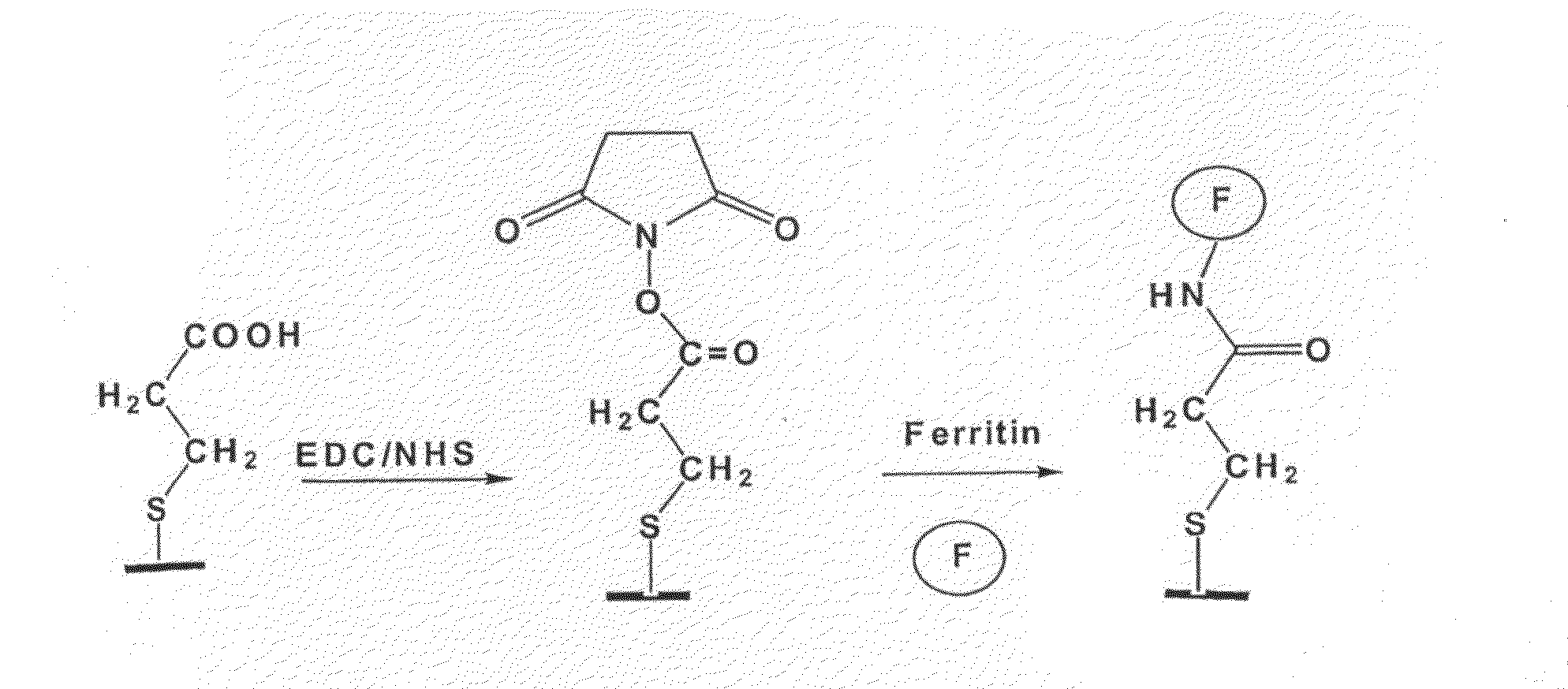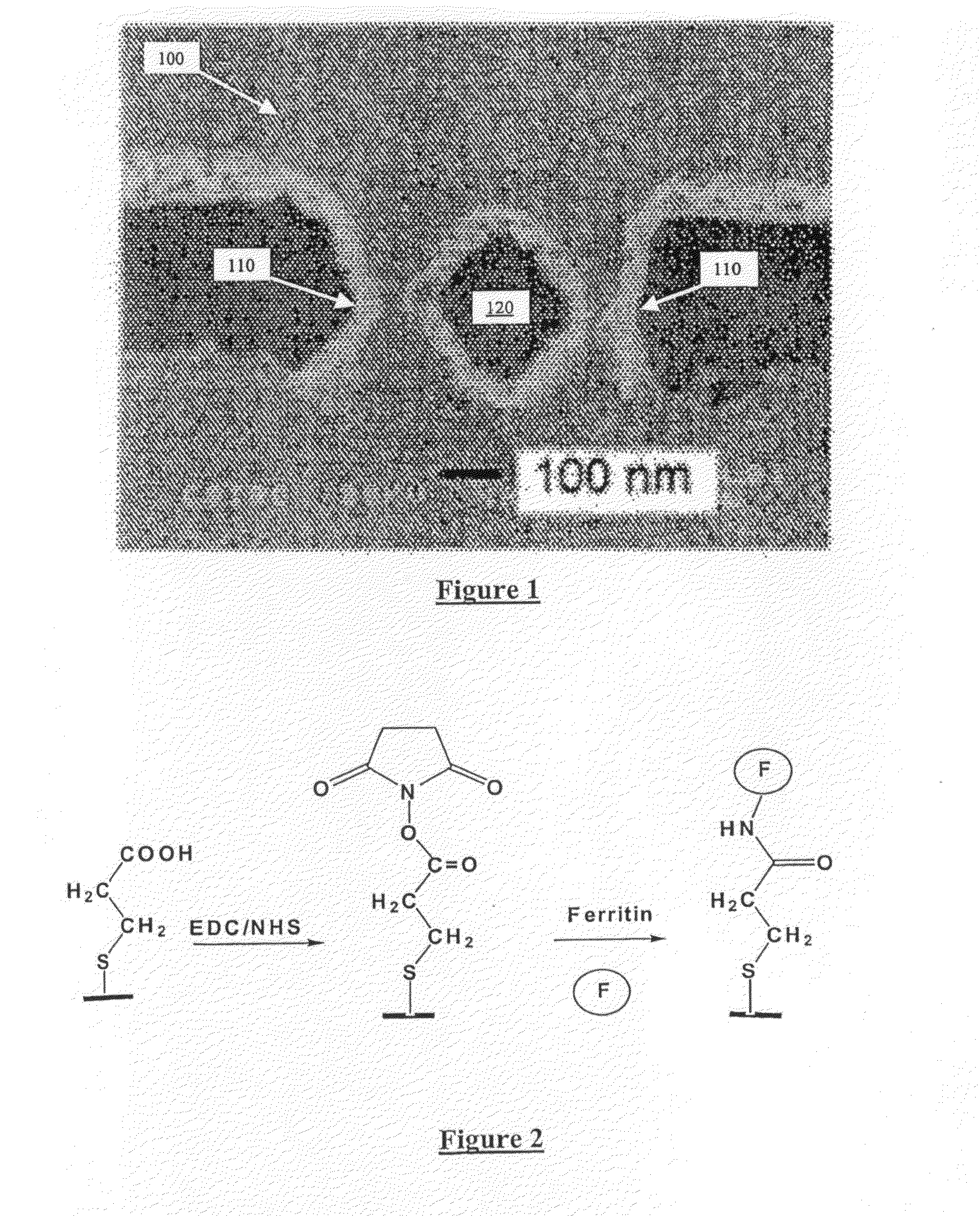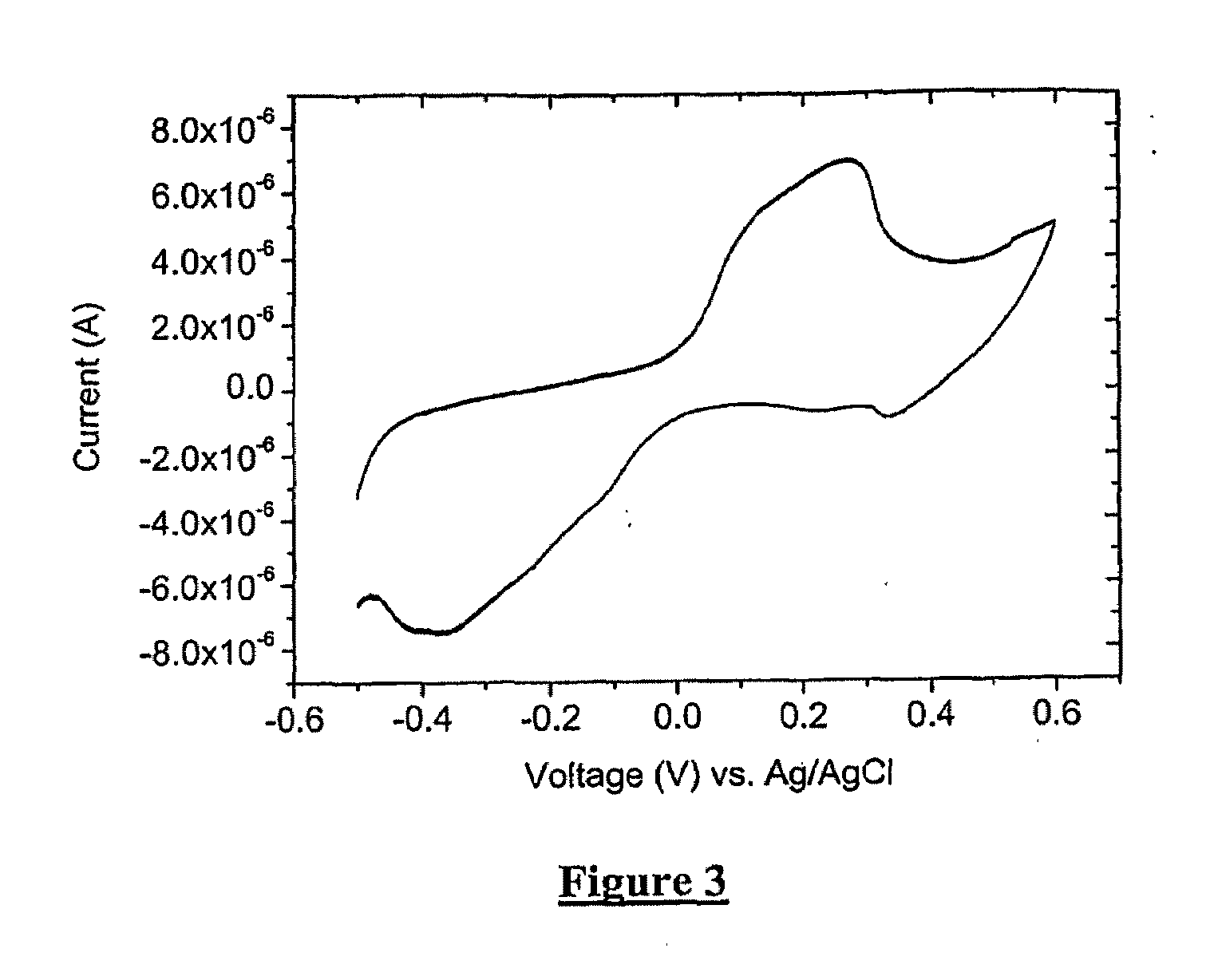Method and apparatus for positioning nano-particles
a nanoparticle and positioning technology, applied in the field of magnetic field detection, can solve the problems of substantial problem of positioning the sample in a suitable location to be detected by the squid, and achieve the effects of less conductance, improved spin measurement, and improved magnetic coupling
- Summary
- Abstract
- Description
- Claims
- Application Information
AI Technical Summary
Benefits of technology
Problems solved by technology
Method used
Image
Examples
Embodiment Construction
[0030]FIG. 1 is a scanning electron microscopy image of a nano-SQUID 100 comprising two nanobridges 110 which define a diamond-shaped nano-SQUID hole 120. The nano-SQUID 100 of FIG. 1 comprises a superconducting niobium underlayer, and the Josephson junctions in the niobium layer of the nanobridges 110 are non-hysteretic due to the presence of a shunting Au overlayer. The shunting resistance of the Au overlayer is about 2Ω.
[0031]The thickness of the Nb and Au thin films were 20 and 25 nm respectively. The Au overlayer was used as an etching mask as well as a protective layer for the Nb film to prevent oxidation. Electron-beam lithography was used to pattern the nano-SQUID 100. The two nanobridges 110 have a width of around 70 nm, giving a total critical current of around 50 μA. The nano-SQUID has a hole 120 of size ˜200 nm×200 nm.
[0032]The desirability to place a magnetic sample within the very small nano-SQUID hole 120 is set out in International Patent Application No. PCT / AU2007 / 0...
PUM
 Login to View More
Login to View More Abstract
Description
Claims
Application Information
 Login to View More
Login to View More - R&D
- Intellectual Property
- Life Sciences
- Materials
- Tech Scout
- Unparalleled Data Quality
- Higher Quality Content
- 60% Fewer Hallucinations
Browse by: Latest US Patents, China's latest patents, Technical Efficacy Thesaurus, Application Domain, Technology Topic, Popular Technical Reports.
© 2025 PatSnap. All rights reserved.Legal|Privacy policy|Modern Slavery Act Transparency Statement|Sitemap|About US| Contact US: help@patsnap.com



